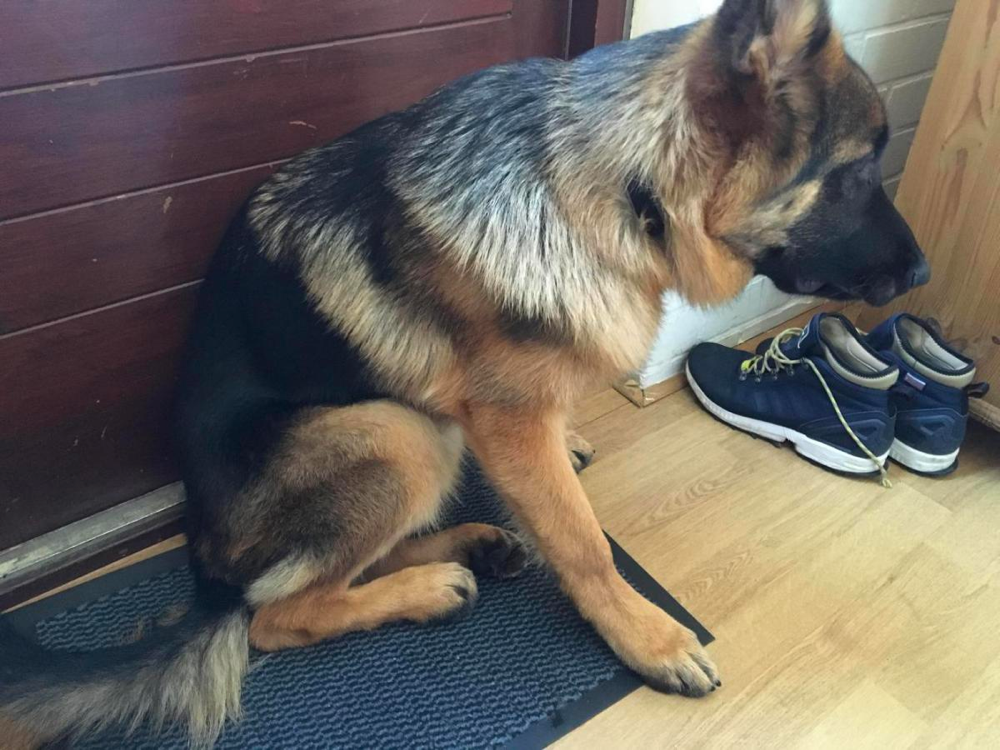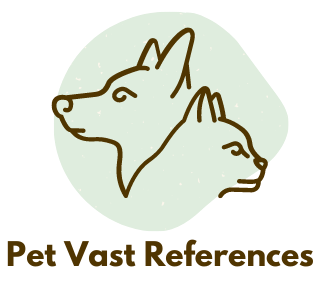Contents
Wobbler Syndrome in GSD and other breeds are narrowing or deformed spinal cervical (neck) vertebrae, generating pressure on the spinal cord by the lower cervical (neck) vertebrae thereby severely affecting the gait of the dog.

Does your dog feel weak and have an unsteady or wobbly gait? Your pet might be the victim of Wobbler Syndrome which affects its cervical vertebrae (bones in the neck that enclose the spinal cord). Here the problem starts with the narrowing down (or stenosis) of the vertebral canal which leads to spinal cord compression or the rupture of the disc. The resultant effect is cervical instability and it has been noticed that dogs affected have a bulging disc or herniation of the contents of the disc, especially in large breed dogs who are middle or old-aged.
The affected breeds are Dobermans, Great Danes, German Shepherds, Boxers, Basset Hounds, St. Bernards, and Weimaraners. Both puppies and adult dogs are affected. Some other names of Wobbler Syndrome are Cervical Spondylomyelopathy (CSM), Cervical Vertebral Malformation (CVM), and Cervical Vertebral Instability (CVI). The exact reasons for the abnormalities in the vertebral column are still not known correctly. Scientists assume that there may be a probability a genetic factor that plays its role. Although this condition is mostly found in certain families of great Danes, the German Shepherd Dog breed is no exception.
What Happens in Wobbler Syndrome?
The space between two vertebrae is cushioned by fluid-filled discs. But in a Wobbler patient, in due course of time, the disc degenerates and ruptures. This exerts additional pressure on the spinal cord. Even skeletal changes can be seen. The vertebral ligaments become loose and overstretched in nature. The cause of the disease is not yet known and there is a possible genetic connection to the disease.
Wobbler Syndrome Signs
The main problem with Wobbler Syndrome is a crouching stance since the dog fails to coordinate its limbs and the torso. In some cases, the dog drags the toes of its rear leg. Gradually dragging starts in the front legs too. Apart from neck pain, the pet shows signs of general weakness. The head shows stiffness and is carried on a bent-down posture. The walk of the dog becomes so very clumsy that it becomes difficult for it to maintain body balance – the reason why it falls in an attempt to turn quickly. The gait is that of a drunken person – mild incoordination in movement (ataxia), which can eventually get escalated to the involvement of the front legs. It might also lead to paralysis of the hind and front legs. In many cases, Wobbler Syndrome shows signs that match the clinical symptoms of other bone disorders and diseases like arthritis, hip dysplasia, and infection of the inner ear. The signs are progressive – which means that in adult dogs the symptoms become more prominent. In German Shepherd Dog, Wobbler syndrome is usually noticed at the age of approximately 4 or 5 years, although a subject can also be diagnosed with this condition at the age of 10 to 12 months. The major signs include:
- Shows a change in the shape of the body of the vertebra
- Shows apparent loss of cranioventral corner of the Vertebrae
- Shows the unusual width and shape of the disc space cranial to the affected region of the vertebra.
- Shows calcification of the affected disc
- Shows osteophyte formation or reactive bone and end-plate sclerosis
- Shows deformity in the articular processes
How to Diagnose Wobbler Syndrome?
An X-ray investigation shows that the Wobbler Syndrome-affected dog has malaligned vertebrae and disk spaces that are narrowed. MRI or CT scans can point to the exact place of compression in the spinal cord.
Prevention and Treatment
Since genetics is believed to have been playing its role here, selective breeding is the only best way to avoid producing wobbler offspring. Avoid feeding a very high quality (high protein diet) to your puppies right after the weaning. The overdosage of calcium and protein in puppy foods may expose them to the risk of this condition. Administering multiple vitamins in the right dose is suggested to avoid this condition.
The treatment depends largely on a series of distinctive factors such as the severity of the condition, age of the subject, prospects of the long-term treatment process, and so on… The administration of corticosteroids plays an effective role in controlling the symptoms. The steroid medication works to reduce the swelling in the compressed area. Surgery can also be considered to rectify spinal cord compression. Here the ruptured disc material is removed to stabilize the affected vertebrae. One more treatment option at my disposal is electroacupuncture. A neck brace proves to be of great support for the spine; it also reduces inflammation. One important point to note is Wobbler Syndrome cannot be cured but definitely treatments are available to alleviate the pain and discomfort.
Suggestions
The food and water bowl have to be elevated to further decrease the pressure in the neck region. Certain activities/games where the dog has to dip down his head should be avoided, for instance, playing fetching balls, etc.
Food plays a pivotal role in keeping Wobbler Syndrome at bay. Do not feed your pet a high protein diet which can easily catalyze the development of Wobbler disease. In many cases, there are no preventive measures for the disease because of its genetic connection. According to many reputable breeders, there has been a noticeable downfall in the number of incidences of Wobblers Syndrome and certain other growth-related diseases in German Shepherds and other canine breeds when the body weight is kept under control growth rate is nutritionally slowed down. However, nutritionally controlling the growth rate has to be scientific. Your puppy should not be exposed to diseases caused by malnutrition. Experts’ guidance in this regard is however essentially necessary.

 Digestive Tract Disorder in German Shepherds
Digestive Tract Disorder in German Shepherds